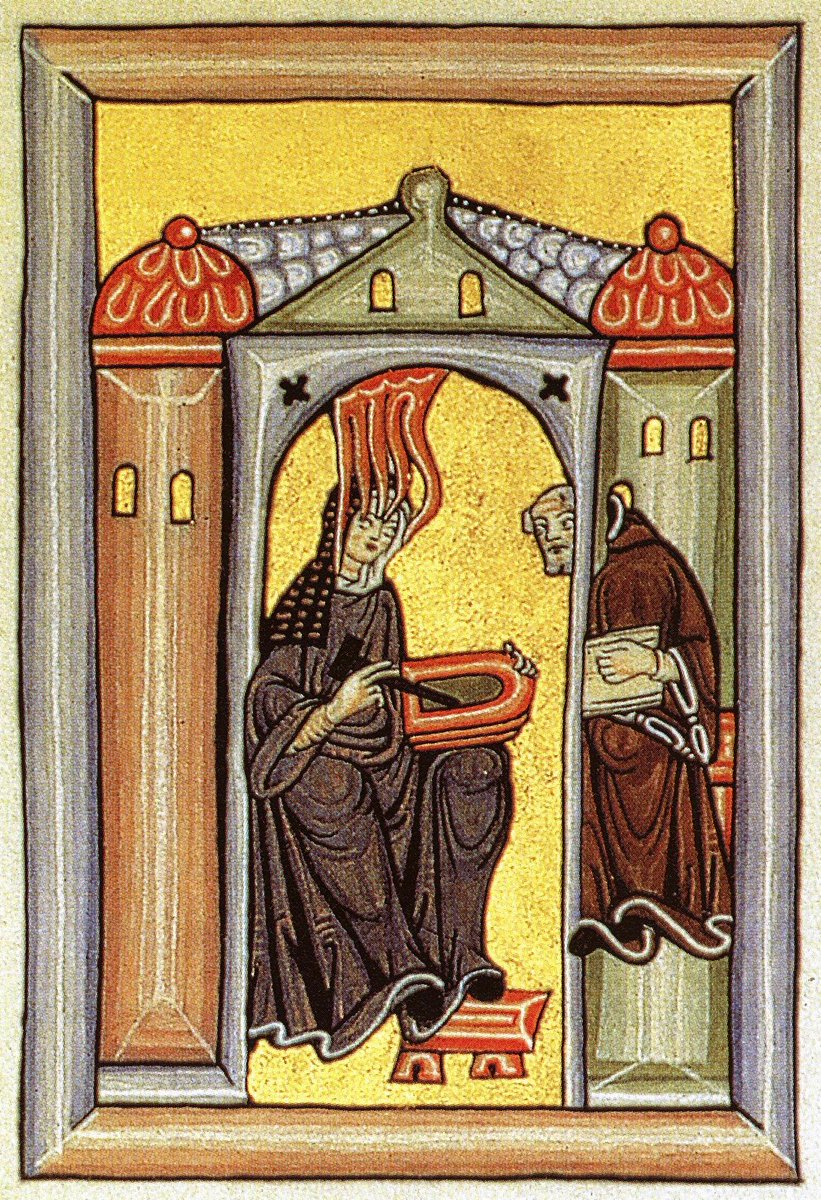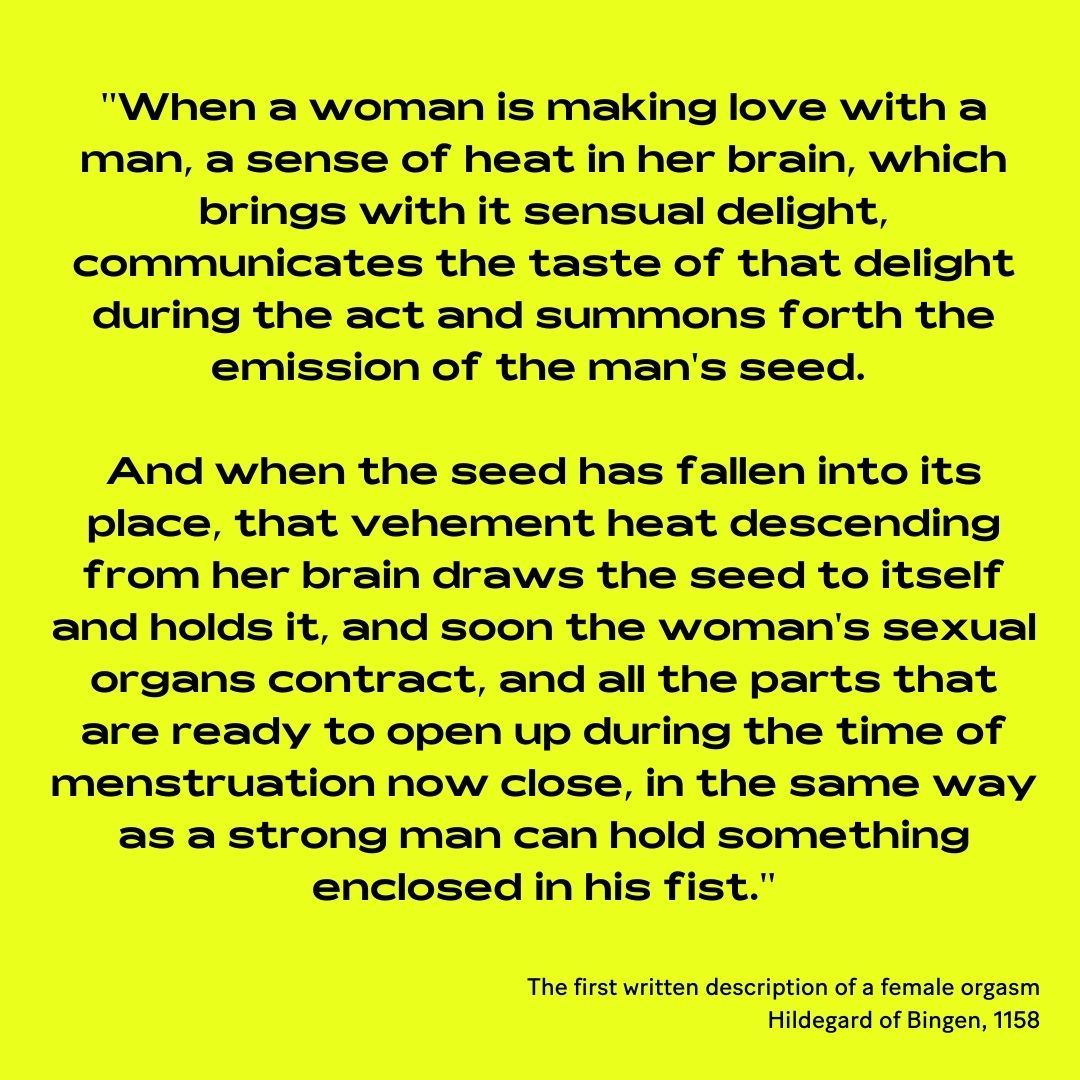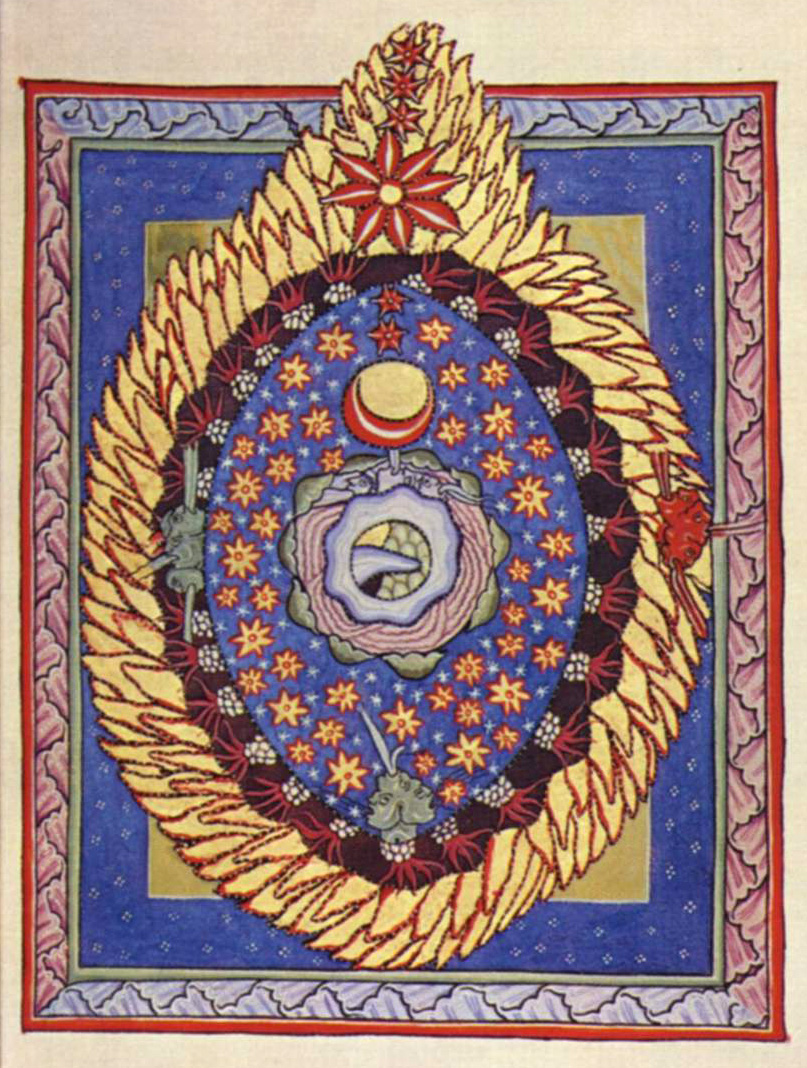
Today to celebrate #LGBTHistoryMonth we're going to introduce you to a medieval nun who you may not have heard of but you definitely should: meet Hildegard of Bingen, composer, writer, mystic, polymath, healer... and probably gay. 

(we'll kick things off with a standard disclaimer: we don't have a time machine so can't go back and just ask her if she was a lesbian, and sexuality was defined differently in the past. But Hildegard really, really loved a woman. A lot.)
Hildegard was born in 1098, and became a nun early in her life. She wrote many works including volumes of visionary theology, scientific and medical writing, and musical plays. Also, the first written description of a female orgasm.
And we mean orgasm. Hildegard of Bingen wasn't commenting on spiritual ecstasy, she definitely described an orgasm. Here's what she wrote in 1158: 

(it's worth noting her description of orgasm is very heteronormative. Although medieval times were incredibly queer, in the mainstream you'd still have to abide by the rules of the church, so she wouldn't have been allowed to talk about orgasm in any other way)
In between writing so many books and plays, and setting up two monasteries, Hildegard also loved a woman: Richardis von Stade, a noble-born nun. Richardis and Hildegard were close. Very close.
Hildegard credited Richardis for persuading her to commit her spiritual visions to writing and inspiring and assisting her in her work. She was incredibly important to Hildegard.
And then Richardis was moved to a monastery far away. Hildegard wrote letters begging to keep her "friend" at her side. She tried asking the Archbishop of Bremen. She tried asking the Archbishop of Mainz She even tried asking the *Pope* to let Richardis stay.
Sure, your girlfriend is great and loves you very much, but has *she* ever written to the Pope begging to keep you by her side? Thought not.
Sadly, two archbishops and a pope didn't listen, Richardis was moved, and Hildegard wrote to her, expressing her grief at their parting. They did not see one another in person again.
When Richardis died, Hildegard's letter to Richardis's brother, the Archbishop of Bremen, speaks of her grief at the loss of her love. In her letter Hildegard wrote of Richardis's beauty: "she was like a flower in her beauty and loveliness in the symphony of this world."
Was Hildegard a lesbian? We can't know. What we do know is she felt incredibly strongly about Richardis, spoke highly of the woman's physical beauty, and the letters carry a sense of passion beyond that of co-workers or friends.
We'll leave you with one final example of Hildegard of Bingen's many talents: an illumination of hers depicting the universe with some distinctly vulval imagery. 

• • •
Missing some Tweet in this thread? You can try to
force a refresh





